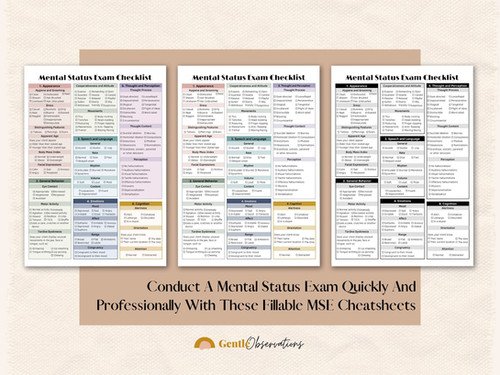The KITE Educator Portal is a powerful tool designed to support educators and students in managing learning assessments and tracking educational progress. Primarily used within the Kansas Assessment Program (KAP) and other states, the KITE (Kansas Interactive Testing Engine) Educator Portal serves as a platform for assessment, reporting, and progress monitoring. This portal provides educators with resources and tools needed for a streamlined testing experience, making it easier to tailor instruction and track each student’s progress. Here, we’ll explore the features, benefits, and usage of the KITE Educator Portal to help educators make the most of this valuable resource.
1. What is the KITE Educator Portal?
The KITE Educator Portal is an online platform that enables educators to administer assessments, monitor student performance, and generate insightful reports on student learning outcomes. Developed by the Center for Educational Testing and Evaluation (CETE) at the University of Kansas, this portal is part of the Kansas Assessment Program and is widely used across other states to support special education and general assessment needs. It simplifies managing assessments, which makes it an essential tool for educators and administrators alike.
2. Key Features of the KITE Educator Portal
The KITE Educator Portal offers a range of features that make it user-friendly and effective for educational assessment:
- Test Administration: The portal provides tools for creating, scheduling, and managing assessments, allowing educators to easily conduct statewide standardized testing.
- Progress Monitoring: Teachers can track each student’s progress over time, identifying areas where they need additional support or advanced learning materials.
- Reporting and Analytics: The portal generates detailed reports on student performance, helping educators analyze results and tailor their teaching strategies accordingly.
- Secure Student Profiles: Each student’s information is securely stored, making it easy for teachers to access records without compromising data security.
- Accessibility Options: KITE is designed with inclusivity in mind, offering various accommodations for students with special needs.
3. How to Access and Set Up the KITE Educator Portal
Accessing the KITE Educator Portal is straightforward:
- Registration: Educators need to register through their school’s administration to gain access.
- Login: After registration, they can log in with credentials provided by the Kansas State Department of Education (KSDE) or other relevant educational authorities.
- Student Profile Creation: Teachers can set up student profiles, ensuring that they include any required accommodations or special needs.
- Scheduling Tests: Educators can set up test dates, assign tests to students, and manage the schedule as needed.
4. Benefits of Using the KITE Educator Portal
The KITE Educator Portal offers numerous benefits to teachers, students, and administrators:
- Efficient Test Management: The portal makes test administration and management easy, allowing teachers to focus on instruction.
- Individualized Support: With detailed reports, teachers can identify each student’s strengths and areas for improvement.
- Accessible for All Students: The platform includes accommodations for students with special needs, helping ensure all students receive fair testing conditions.
- Real-Time Progress Tracking: Teachers can monitor progress in real-time, making it easier to adjust teaching methods to improve learning outcomes.
5. Understanding Assessments on the KITE Platform
KITE supports several types of assessments, which can vary depending on the state and district requirements. Common assessments include:
- General State Assessments: These measure students’ proficiency in core subjects like math, reading, and science.
- Alternate Assessments: For students with significant cognitive disabilities, KITE offers modified assessments.
- Formative Assessments: These short, targeted assessments help teachers gauge student understanding of specific topics.
6. Best Practices for Educators Using the KITE Educator Portal
To make the most of the KITE Educator Portal, here are some best practices for educators:
- Familiarize Yourself with the Interface: Spend some time exploring the portal’s features to become comfortable with its layout and options.
- Regularly Update Student Profiles: Keeping profiles updated helps ensure accurate reporting and appropriate accommodations.
- Review Reports Consistently: Regular report reviews can help you make timely interventions for students who may need additional help.
- Use Data to Inform Instruction: Leverage insights from the portal to adjust lesson plans, focusing on areas where students show the greatest need.
7. How Parents Can Benefit from the KITE Educator Portal
Although primarily a tool for educators, the insights generated by the KITE Educator Portal can also be beneficial for parents:
- Transparent Progress Tracking: Educators can share general progress and results with parents to keep them informed about their child’s learning journey.
- Data-Driven Conversations: With detailed assessment data, parents and teachers can have more productive conversations about student needs.
- Encouraging Student Support at Home: By understanding areas where their child may be struggling, parents can reinforce learning at home.
8. Addressing Security and Privacy in KITE
Student privacy and data security are of utmost importance within the KITE Educator Portal:
- Secure Access: The portal requires strict login credentials, ensuring only authorized users can access sensitive student data.
- Data Encryption: All data is encrypted, providing additional protection for student records.
- Adherence to Federal Standards: The KITE platform complies with FERPA (Family Educational Rights and Privacy Act) guidelines to ensure the security of student information.
Conclusion
The KITE Educator Portal is a comprehensive resource that equips educators with the tools they need to administer assessments, monitor progress, and provide personalized learning support. By using the portal effectively, educators can make data-driven decisions, ensuring that each student receives the guidance and resources they need to thrive academically. For schools and teachers looking to improve their assessment processes, the KITE Educator Portal is a valuable asset that can simplify testing, enhance student engagement, and contribute to more successful educational outcomes.
FAQs
Q1: Can parents access the KITE Educator Portal?
No, access to the KITE Educator Portal is typically limited to authorized educators and administrators. However, teachers can share relevant assessment insights with parents.
Q2: How does KITE accommodate students with special needs?
The portal includes options to add accommodations to student profiles, allowing students with special needs to receive the appropriate support during assessments.
Q3: What types of tests can be administered on the KITE Educator Portal?
The portal supports a variety of assessments, including general state assessments, alternate assessments for students with disabilities, and formative assessments.
Q4: Is student data secure on the KITE Educator Portal?
Yes, the portal employs secure login, data encryption, and FERPA compliance to protect student data.
Q5: How often should educators update student profiles in the portal?
Educators should update profiles regularly, especially before new assessments, to ensure that any accommodations and needs are current.





2 thoughts on “KITE Educator Portal: A Comprehensive Guide for Teachers and Students”